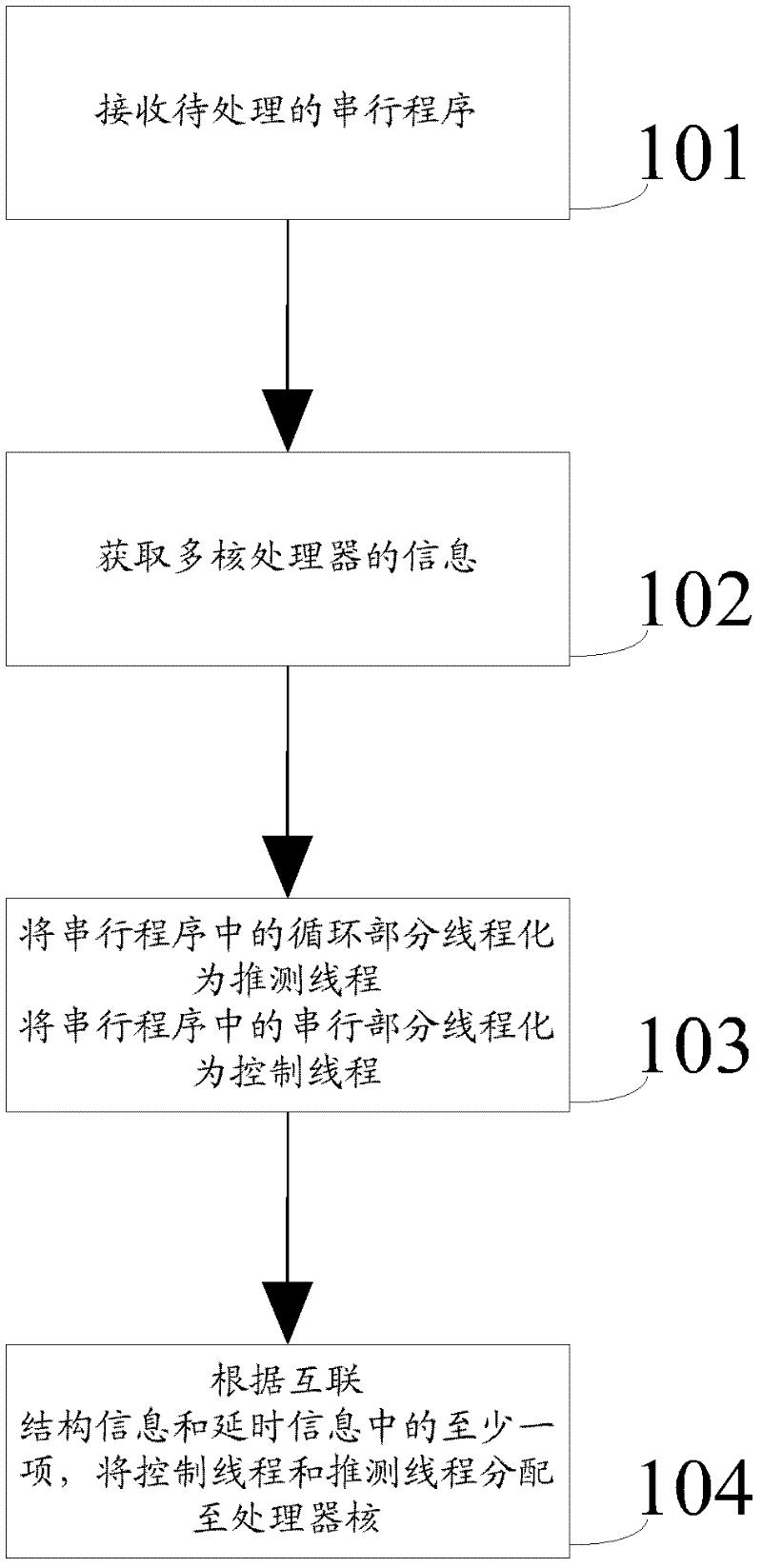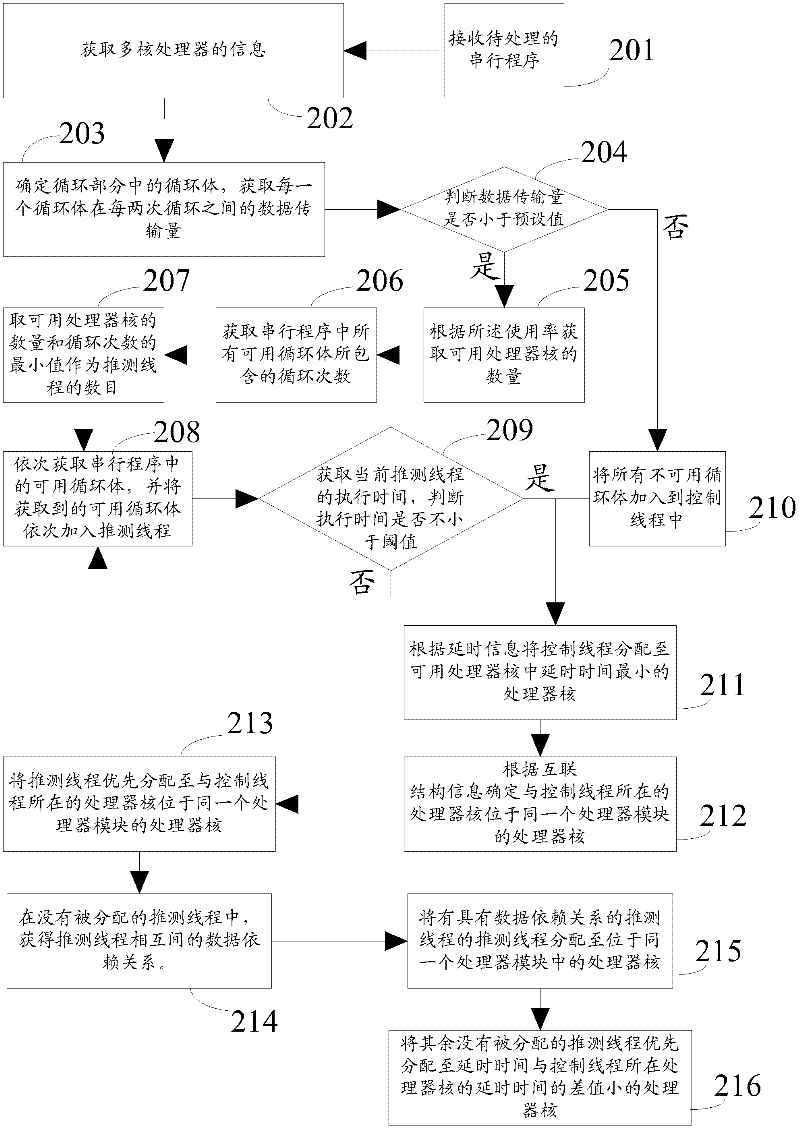Method and device for threading serial program in nonuniform memory access system
A serial program and memory access technology, which is applied in the direction of multi-programming devices, machine execution devices, concurrent instruction execution, etc., can solve problems such as reducing the performance of multi-core processors and affecting the execution effect of multi-threading mechanisms, and achieve slow memory access Delay effect
- Summary
- Abstract
- Description
- Claims
- Application Information
AI Technical Summary
Problems solved by technology
Method used
Image
Examples
Embodiment 1
[0031] The embodiment of the present invention provides a threaded serial program method in a non-uniform memory access system, such as figure 1 As shown, the method includes:
[0032] Step 101: Receive a serial program to be processed.
[0033] Specifically, in this embodiment, in the NUMA system, the computer receives the serial program to be processed through the program analysis tool in the operating system, and performs pre-compilation and optimization of the code of the serial program, and the serial program The program code is converted into intermediate code to prepare for further code analysis, for example:
[0034] Such as image 3 As shown, the computer compiles the code of the serial program through the SUIF front-end compilation tool in the program analysis tool to obtain the intermediate code, and optimizes the intermediate code through the SUIF optimizer to obtain the optimized intermediate code.
[0035] Step 102: Obtain information about a multi-core processor.
[0036...
Embodiment 2
[0047] The embodiment of the present invention provides a threaded serial program method in a non-uniform memory access system, such as figure 2 As shown, the method includes:
[0048] Step 201: Receive the serial program to be processed.
[0049] Step 202: Acquire information of a multi-core processor, where the information of the multi-core processor includes at least one of the interconnect structure information of the multi-core processor and the delay information of all processor cores.
[0050] Wherein, the delay information includes the memory access delays of all the processor cores.
[0051] Step 203: Determine the loop body in the loop part, and obtain the data transmission amount of each loop body between every two loops.
[0052] Step 204: Determine whether the data transmission volume is less than a preset value.
[0053] Wherein, if the data transmission amount is less than the preset value, the loop body is an available loop body in the serial program; if the data transmi...
Embodiment 3
[0089] The embodiment of the present invention provides a threaded serial program device in a non-uniform memory access system, such as image 3 As shown, the device includes: a receiving module 501, an extraction module 502, a threading module 503, and an allocation module 504.
[0090] The receiving module 501 is used to receive the serial program to be processed.
[0091] The extraction module 502 is configured to obtain information of a multi-core processor, where the information of the multi-core processor includes at least one of interconnect structure information of the multi-core processor and delay information of all processor cores.
[0092] Wherein, the delay information includes the memory access delays of all the processor cores.
[0093] The threading module 503 is configured to thread the loop part of the serial program into a speculative thread, and thread the serial part of the serial program into a control thread.
[0094] The allocation module 504 is configured to all...
PUM
 Login to View More
Login to View More Abstract
Description
Claims
Application Information
 Login to View More
Login to View More - R&D Engineer
- R&D Manager
- IP Professional
- Industry Leading Data Capabilities
- Powerful AI technology
- Patent DNA Extraction
Browse by: Latest US Patents, China's latest patents, Technical Efficacy Thesaurus, Application Domain, Technology Topic, Popular Technical Reports.
© 2024 PatSnap. All rights reserved.Legal|Privacy policy|Modern Slavery Act Transparency Statement|Sitemap|About US| Contact US: help@patsnap.com










